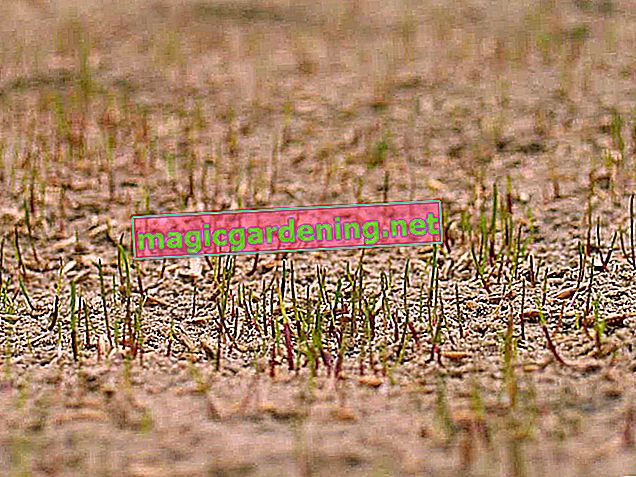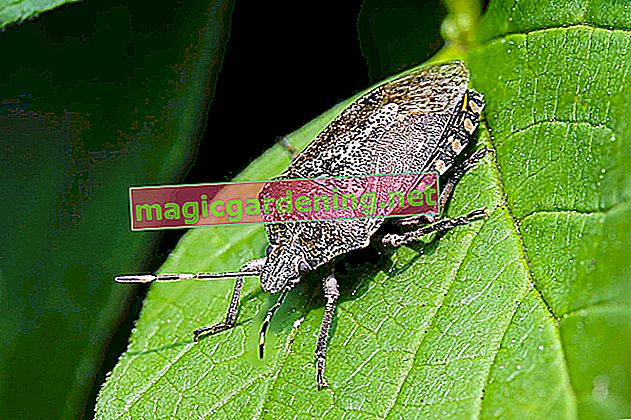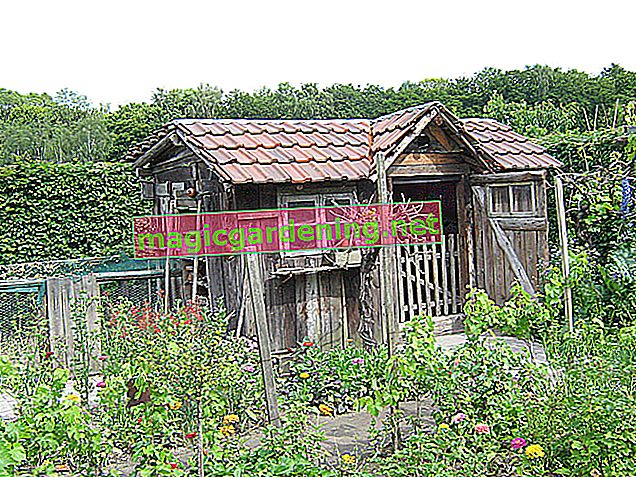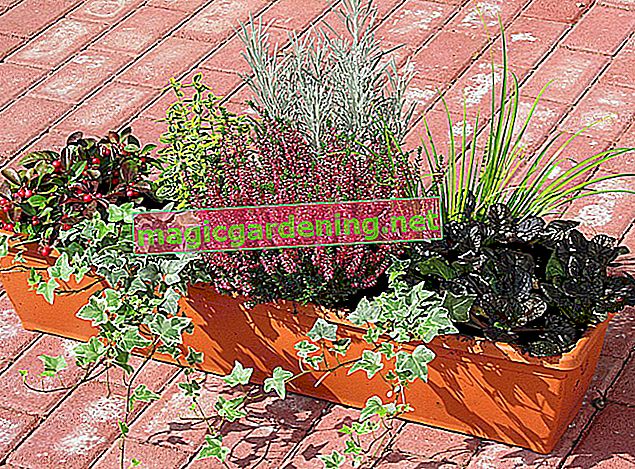
Warum ist ein Rasen zu besanden?
Damit ein Rasen sich zu dem ersehnten samtig-grünen Teppich entwickelt, ist eine fachgerechte Pflege unverzichtbar. Neben einem ausgewogenen Wasser- und Nährstoffhaushalt sowie dem regelmäßigen Mähen, spielt die Bodenbeschaffenheit eine wichtige Rolle. Kommt es hier zu Mängeln, löst die Ausbringung von Rasensand die folgenden Probleme:
- Besanden lockert verdichteten Rasen auf
- Zu schwerer, fetter Boden erhält eine durchlässigere Konsistenz
- Lawn sand creates a drainage to protect against waterlogging
- Turf enriched with quartz sand (€ 14.90 at Amazon *) is more effectively aerated
- Small bumps are evened out by sanding
also read
- Freshen up your lawn - aerate and sand
- If the lawn causes problems - treat lawn problems
- The ultimate lawn - sow and maintain English lawns
In the interplay of all care factors, lawn sand thus makes a valuable contribution to dense, deep green grass growth.
Which sand is suitable for lawn sand?
Do not use any sand that may have been left over after the last construction work. In order to sand your delicate lawn with expertise, the material should be obtained as follows:
- Very fine, with a grain size of 0 to a maximum of 2 millimeters
- Washed and lime-poor quartz sand
- Preferably in round-grain quality
Rhine sand is ideally suited for sanding the lawn, and at a cost of EUR 0.45 per kilogram, it is also cheap to buy.
Tips
Due to its small grain size, play sand is ideally suited to lawn sand. Since the silt and clay particles were washed out particularly carefully, it does not necessarily have to be quartz sand. Fine-grained, washed pit sand for the children's playground is also good for the lawn.
This is how you sand the lawn properly
Simply spreading lawn sand over the green area does not have the desired effect. Rather, it is important to work the material into the sod. Follow these steps:
- In spring or autumn, mow the lawn to a cutting height of 2-3 centimeters
- Scarify the green area lengthways and crossways
- Set the device to a working depth of 3-5 millimeters
- Remove the combed out lawn thatch and drive the mower over the area again
After this preparatory work, fill the quartz sand into a spreader and spread it on the lawn. There is nothing wrong with distributing it by hand, as long as the lawn sand is spread evenly and in a thin layer. A dosage of 5 liters per square meter is sufficient. Then carefully sweep the lawn sand with a broom or rake.
Aeration intensifies the sand effect
If you are confronted with a heavily compacted turf, do not leave it at scarifying as part of the preparatory work. So that the lawn doesn't run out of breath after all, careful hobby gardeners also ventilate the green before sanding it up. How to do it:
- Use a manual or mechanical aerator to work the lawn
- Push the hollow soil nails into the ground at a distance of 10-15 centimeters
- Alternatively, punch 400 holes per square meter in the turf with the digging fork
The excavated earth must not be trampled again, but is disposed of. Manual devices such as the lawn woodpecker have a practical tub for this purpose. The small 'Erdwürste' collect in it to be easily disposed of. Then you can scatter the quartz sand as described.
Topdressing - the premium version of the sand
Experienced hobby gardeners opt for top dressing in order to provide even better sand to a lawn that has been burdened by heavy weeds and moss growth. It is a rich mix of quartz sand, organic matter and fertilizer. Organic additions are peat, sifted compost or fine leafy soil. The remaining earth cones after aeration are also suitable.
This mixture not only fulfills the classic tasks of sanding, but also vitalizes the noble grasses of the lawn at the same time. The growth then takes place even faster, so that moss and weeds have bad cards.
Tips & Tricks
If the lawn is primarily used as a way of playing for children, you can use quartz sand to create a practical clean layer between the lawn support level and the rascals. This works very easily without scarifying or ventilating beforehand. You distribute a maximum of 2 liters of lawn sand per square meter in spring and summer and work it in with a coarse broom.








